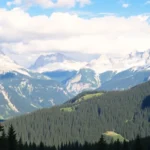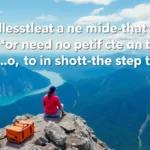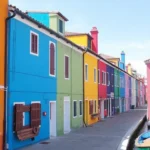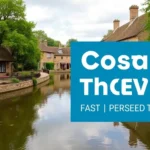4-Day Dolomites Itinerary: Day-by-Day Travel Guide

Are you dreaming of an adventure through the breathtaking landscapes of the Dolomites? If you're uncertain about which itinerary to follow, you're in the right place! In this article, we'll share our detailed 4-day itinerary in the Dolomites, highlighting the must-see spots, where we stayed, and a handy map for your convenience. Get ready to be inspired by the stunning lakes, majestic mountains, and charming villages that this region has to offer!
Our journey led us through some of the most incredible places in the Dolomites, sparking a desire to return and explore even more. This area is a treasure trove of activities! Whether it's a new trek to discover, a funicular ride with panoramic views, or wandering through picturesque towns, you’ll never run out of things to do here.
We embarked on our adventure at the end of September, starting from Treviso airport and concluding in Udine (to spend a few days with Lety's family). We covered around 900 km in a stylish Fiat Panda, just the right amount for two travelers.
⭐ Check out all the tips for driving and renting a car in Italy here!
Here’s our 4-day Dolomites itinerary by car, detailing our daily visits:
Day 1: Arrival and Exploring Treviso
Arriving in Treviso in the late afternoon, we decided to spend the night in this charming city, which definitely deserves a visit. We took a stroll through the picturesque center, enjoyed some local tapas, and turned in early to recharge for the adventure ahead. We stayed at the Hotel Dimora del Teatro.
→ Check out everything to see and do in Treviso!
The day began with a short bus ride (1.50€) to the airport to pick up our rental car. We named our car “Speck,” after the famous cured meat from Trentino, and set off north towards the Dolomites. With Google Maps guiding us, we were excited to begin our exploration.
However, our journey began with a hiccup. The first stop on our list was the Cascata della Soffia in the Valley of Mis, near Belluno, but we missed it entirely! Fortunately, we didn’t miss the stunning Val Venegia, often referred to as the Little Canada of the Dolomites. This beautiful valley leads into the Pale di San Martino range, where we discovered a dirt road that led us to the second of two malgas. If you find the route closed during peak season, don’t worry—there are two parking areas from which you can take a lovely hike to explore the area.
On our way, we crossed the Passo Rolle (1,989 m), the first of many mountain passes we would encounter during our 4-day journey. This pass features a quaint church, a few hotels and restaurants, and trails leading to the Pale di San Martino mountains, which boast peaks exceeding 3,000 meters. There’s also an easy trail that leads to the statue of Cristo Pensante.
Afterward, we navigated through Passo Valles (2,032 m), with yet another tiny chapel, and headed toward one of the Dolomites' most iconic spots: the Lago di Carezza. From the parking area (2€/hr), a tunnel leads directly to the lake's main viewpoint. A circular path surrounds the lake, which can be completed in about 30-45 minutes.
This area is home to numerous hotels, including the historic Grand Hotel Carezza, over a century old, making it a great base for our first night near the village of Moena. We made a quick coffee stop at Bar Ja Vito in Soraga before calling it a day!
- Approximate distance: 240 km
- Accommodation: Hotel El Laresh
Day 2: Valleys and Castles
We started our second day by traversing the lesser-known Val di Tires, dotted with quaint villages like San Cipriano, where we snapped some of our favorite photos with friendly cows.
Before long, we passed by Albergo Frommeralm, where the chairlift takes you to the Rifugio Fronza Alle Coronelle, the starting point of one of the most impressive treks in the Dolomites: the Torres de Vajolet. It's highly recommended to dedicate a full day for this trek and consider spending the night at Rifugio Re Alberto I. Mark it as an alternative!
A few kilometers further, we made a stop at the Castillo de Prösels, a well-preserved medieval castle that can be explored via guided tours (9€). We admired it from the road since our day was packed!
Continuing along the scenic route, we passed through the charming village of Fiè allo Sciliar, with a quick stop at the beautiful Chiesa di San Costantino. Next, we took the turnoff leading up to the Alpe di Siusi, a high plateau filled with lush meadows and mountain chalets that seem straight out of a fairy tale. To reach the upper areas, you’ll encounter a checkpoint; if you're driving, access is only allowed before 9:00 AM or after 5:00 PM. Alternatively, take a funicular for 20€ round-trip.
We then headed back down to the Isarco River, traveling north toward another increasingly popular Dolomites icon: Val di Funes and the Chiesetta di San Giovanni in Ranui in Santa Magdalena, which is a favorite on Instagram. Unfortunately, we encountered clouds and rain, but the scenery was still breathtaking!
If you continue north, you'll find a gem: the city of Bressanone, renowned for its Duomo. We didn’t make it there, opting instead to retrace our steps into what is likely the most significant valley in the Italian Dolomites: Val Gardena, famous for skiing, via ferratas, and hiking.
We stopped in Ortisei, one of the most important urban centers in the Dolomites, to make it our base. Here, we took the opportunity to taste some local specialties at Ristorante Lamm (offering a daily menu for 14€), strolled through the town center, and, if time allows, you can ride the cable car (35€ round-trip) to Seceda at 2,500 meters (the highest viewpoint in the valley). From up there, you'll be treated to one of the most stunning views of the trip.
Should you have a whole day, this area is perfect for exploring its trails, including the popular Seceda Ridgeline.
Back on the ground, we continued our journey through the Val Gardena, passing by Ortisei where you can stop at Chiesa di San Giacomo, known for its frescoes and being one of the oldest in the area. As we moved through charming villages like Santa Cristina and Selva di Val Gardena, we headed south, bypassing the Passo Gardena.
If you're looking to treat yourself, stop by Rifugio Emilio Comici at the foot of Sassolungo, renowned for its chic cuisine. We didn’t visit, but reviews suggest it offers a fantastic dining experience with stunning views; just be prepared to open your wallet. And rumor has it, there’s a little surprise in the bathrooms!
⭐ Here are 10 dishes you must try on your Dolomites journey.
The road continues upward, surpassing Passo Sella at 2,240 meters, offering breathtaking 360-degree views with the towering Sella Group as a backdrop. Numerous hikes are available nearby, one known as Città dei Sassi, which winds between rocks under the watchful eye of the imposing Sassolungo. It’s an easy family-friendly trail with informative panels showcasing the region's biodiversity.
We descended on a winding road, arriving at Canazei, deep in the Val di Fassa, one of the most beautiful valleys in the Dolomites, where we would spend the night. With no time to waste, we enjoyed a soothing session in the heated pool and sauna before heading to bed.
- Approximate distance: 160 km
- Accommodation: Hotel Medil
Day 3: Peaks and Panoramas
Bright and early, we hopped back into the car, ascending the same winding road we had used the day before. This day, we aimed for the iconic Passo Pordoi (2,239 meters), a legendary climb featured in the Giro d'Italia, where a monument honors Italy's greatest cyclist, Fausto Coppi.
We had marked the Sass Pordoi Cable Car as a must-do, leading to a viewpoint known as the Terrazza Delle Dolomiti, which reputedly boasts spectacular panoramic views. However, the weather didn’t cooperate; upon checking real-time webcams, we saw that clouds blanketed the area, so we saved ourselves the 25€ per person.
Next came a dilemma: should we head north toward Lago di Braies or continue exploring the eastern Dolomites in Trentino and Veneto? We chose the latter, leading us first to the Lago Fedaia at Passo Fedaia (2,057 meters), which offers the best views of the Marmolada on clear days.
The Marmolada, the highest mountain in the Dolomites at 3,343 meters, is still home to its glacier on the northern slope, which is suffering from climate change and receding each year. This glacier gained unfortunate fame in July 2022 when a tragic avalanche occurred due to the warming climate, claiming 11 lives.
A funicular departs from this point, reaching Rifugio Ghiacciaio Marmolada, almost touching the glacier. If the weather isn’t favorable, you can visit the small but interesting Museum of the Great War, which showcases unique artifacts from WWII.
The mountain road winds through tunnels as we headed to Alleghe, one of the most picturesque towns we visited. The stunning turquoise lake shares its name with the town, reflecting the majestic Civetta mountain (3,220 m). A peaceful walk around the lake is a must, and in summer, you can even rent boats!
As we’ve seen, the Dolomites have numerous passes that cross towering mountain chains above 2,000 meters. Next up was the Passo Giau, one of the most famous, with the silhouette of Monte Nuvolau ahead. Standing at 2,236 meters, it is a legendary ascent for cycling enthusiasts.
Alternative for Hikers
From the Passo Giau, you can undertake a circular route around the Cinque Torri, passing by five mountain huts (approx. 11 km). Alternatively, you can divert to Passo di Falzarego and take the cable car from Baita Bai di Dones up to Rifugio Scoiattoli, located at the foot of the Cinque Torri.
Following the road, we reached Cortina d’Ampezzo, which hosted the Winter Olympics in 1956 and has since become a favorite base for winter sports enthusiasts. We couldn’t find a decent place to stay at a reasonable price, so we continued towards our next night’s accommodation.
Before that, we made one last stop to refuel our energy levels at Birraria Bauce, where you'll feast like a king!
- Approximate distance: 120 km
- Accommodation: Hotel Boite
Day 4: The Enchanting Lago di Braies
On our final day in the Dolomites, we dedicated most of our time to visiting the Lago di Braies, one of the region's most famous locations. However, we had several kilometers to cover to reach it, so we enjoyed a few stops along the way.
We began retracing our steps through the Valle d’Ampezzo, and at Cortina, we took a detour towards Passo Tre Croci, leading us to the feet of the iconic mountain range known as The Three Peaks of Lavaredo. These three peaks, nearly 3,000 meters high, have become a symbol of the Dolomites.
Alternative for Hikers
Passo Tre Croci serves as a starting point for the trek to Lago di Sorapis. The path is moderately challenging, and ideally, you should book a night in a mountain hut at the top, but the scenery and views are well worth the effort.
There is a circular trek that runs at the base of these mountains above 2,000 meters. To start this trek, you’ll need to reach the Rifugio Auronzo, but keep in mind that the access road is only open from May to November and charges a toll of 30€.
Given the weather forecasts warned of unfavorable conditions, we decided to skip this plan and made several stops along the way, including the lovely Lago di Misurina, the Lago di Landro (which reflects the iconic mountains on clear days), and a viewpoint overlooking The Three Peaks of Lavaredo (next to Ristorante Tre Cime), as well as the Lago di Dobbiaco. This entire Valley di Landro was fortified during the World Wars, and remnants of bunkers and forts remain today, along with a war cemetery.
In the village of Dobbiaco, just 10 km from the Austrian border, we hit a busy road, making our way to the Lago di Braies. As anticipated, we wouldn’t be alone there.
This close proximity to the neighboring country, combined with its easy access and stunning natural beauty, has made it one of the most visited spots in the Dolomites. So, what does that mean? Get ready to pay 10€ for parking (for 3 hours), which is enough time to complete the loop around the lake, stop for countless photos, and even, if you desire, rent a boat to glide over its chilly waters (just try not to fall in!).
The Lago di Braies was our final highlight before wrapping up our 4-day expedition in the Dolomites. From there, we headed towards Lety's home in Udine, and although we had marked a few interesting stops, like the Val Fiscalina on a small detour or the Lago di Auronzo, we barely paused for coffee before arriving with the last rays of sunlight.
- Approximate distance: 300 km
- Accommodation: Lety's house
Detailed map of the 4-day itinerary in the Dolomites
Here’s a detailed map of the itinerary we followed during our 4 days in the Dolomites:
We hope that our 4-day road trip through the Dolomites has piqued your interest and that you soon embark on your own adventure in this stunning part of northern Italy!
| Save on your trip |
| Compare and find cheap flights here |
| Find accommodation at the best prices here |
| Book activities and tours in Spanish here |
| 5% discount on your travel insurance IATI here |
| Book transfers from the airport here |
| Get a 10€ gift when booking transport across Europe here |
| Find out how to withdraw money without fees here |
| 5% discount on your eSIM from Holafly here |
| Rent a car with the best offers here |
| Compare prices for van rentals here |
| The best books and travel guides here |
| All our articles about Italy |





Deja una respuesta